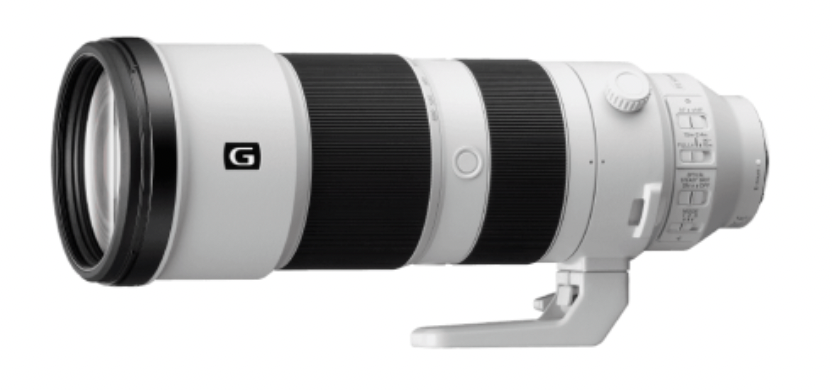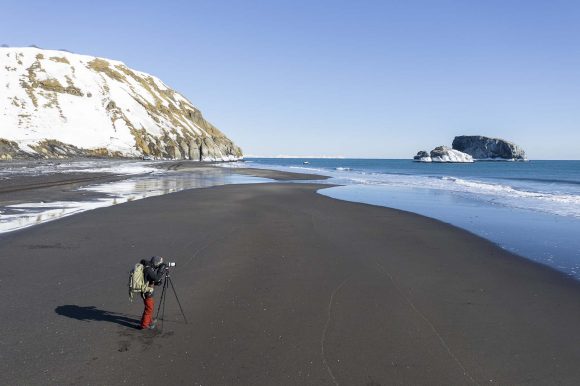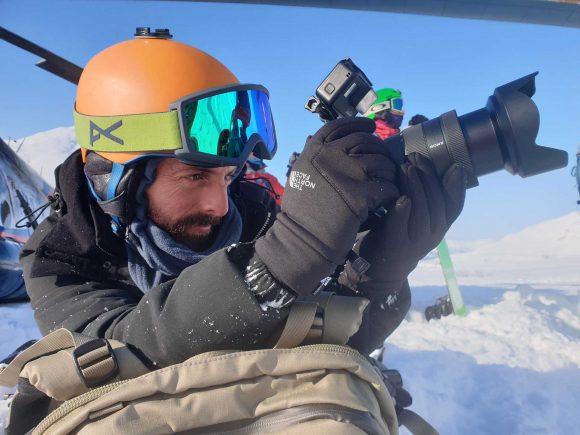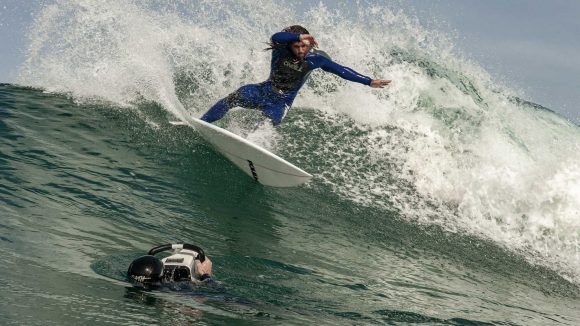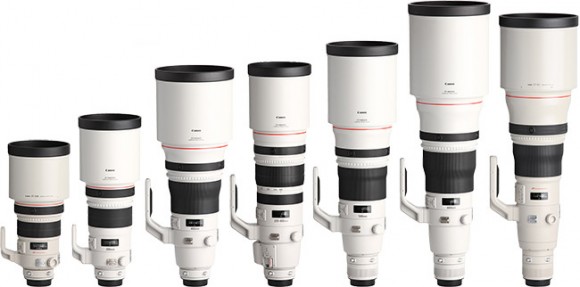The Right Lens for Surf and Water Sport Photography
The Right Lens for Surf and Water Sport Photography
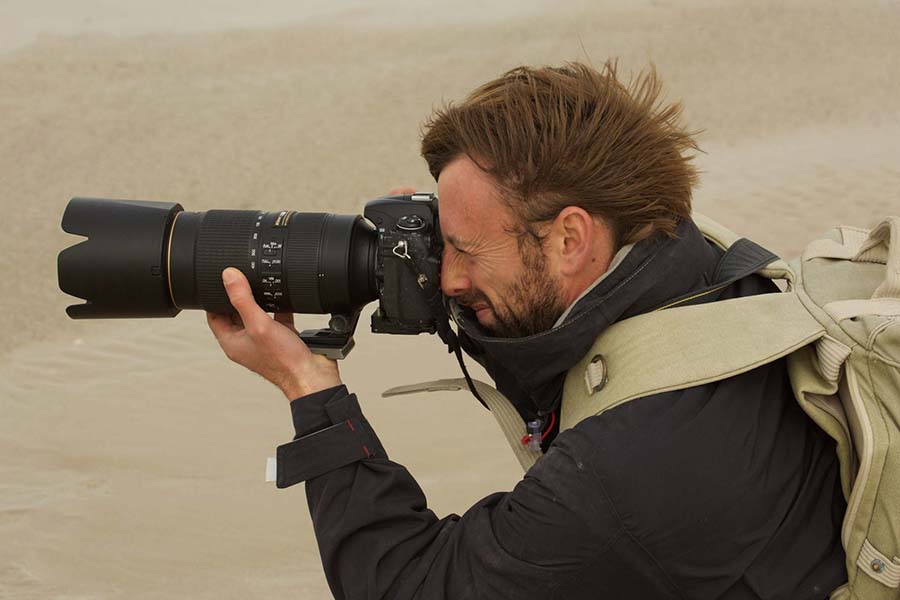
Lens for Surf Photography
So how we are choosing the right Lens for Surf Photography ?
What mm lens is best for surf photography and water sports?
As a surf and water sport photographer, I use a range of equipment that enables me to photograph from in the water and on the shore, thus widening my film angles and bringing the observer closer to the experience.
In this blog, I am delighted to share with you the information I have accumulated over the years on lenses currently in the market that are suitable for water sport photography and surf photography. All of this information is derived from personal experience, articles I have read and written and personal contact with other sea sport photographers.
We all know that the rate of technological development over recent years has increased greatly, as has the rate of production and development of new photography equipment and lenses. Prices may range from inexpensive to exorbitant, but are also determined by the optic quality of the lenses, which can range from standard to high quality optics.
Let me recommend a number of lenses currently on the market, with two separate objectives in mind:
-
- Photography from in the water
-
- Photography from the shore or on land
Lenses for filming on land:
What is the best focal length of lens for shooting from the beach?
When we film on land, whether at sports competitions, surfing sessions or any other event where we find ourselves distant from the surfer: We may be standing on the beach or on a cliff, boulder or boat at a distance that requires us to use telephoto lenses, which are mostly intended to bring very distant objects up close.
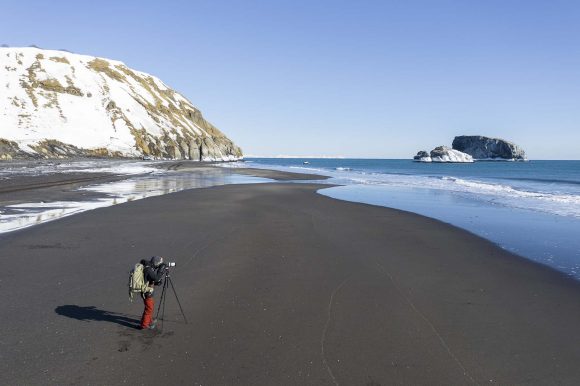
There are two types of telephoto lenses:
Zoom Telephoto lenses
The advantage in these lenses lies in their varying zoom, so we can catch different situations more quickly without having to change lenses.
Sometimes this is very important when we filming water sport events and action sport.
Recommended ranges of lens for surf photography from the shore:
The following zoom ranges are the most popular on the market:
100 – 400 mm I 150 -600 mm I 200 – 600 mm I 100 -500 mm I 80 -400 mm I 200 -500 mm I 18 -400 all around
Here you can find the exact lens model and links for amazon:
| SIGMA/TAMRON | |
| Sigma 150-600mm f/5-6.3 DG OS HSM Sports Lens (CANON, NIKON, SONY) |  |
| Tamron SP 150-600mm f/5-6.3 Di VC USD G2 (CANON, NIKON) |
VIEW AT AMAZON |
| Sigma 100-400mm F5-6.3 (SONY, CANON) |
VIEW AT AMAZON |
| Sigma 60-600mm f/4.5-6.3 DG OS HSM Sports Lens ( CANON, NIKON, SONY) | VIEW AT AMAZON |
| Tamron 18-400mm F/3.5-6.3 DI-II VC HLD (crop sensor all around lens for SONY, CANON) | VIEW AT AMAZON |
| CANON | |
| Canon RF 100-300mm F2.8L IS USM **NEW** | VIEW AT CANON |
| Canon EF 200-400mm f/4L IS USM Extender 1.4x Lens | VIEW AT AMAZON |
| Canon EF 100-400mm f/4.5-5.6L IS II USM Lens |
VIEW AT AMAZON |
| Canon RF 100-400mm f/5.6-8 IS USM Lens | VIEW AT AMAZON |
| Canon RF 100-500mm f/4.5-7.1 L IS USM | VIEW AT AMAZON |
| SONY | |
| Sony FE 100-400mm F4.5–5.6 GM OSS |
VIEW AT AMAZON |
| Sony FE 200-600mm F5.6-6.3 G OSS | VIEW AT AMAZON |
| NIKON | |
| NIKKOR Z 100-400mm f/4.5-5.6 VR S | VIEW AT AMAZON |
| Nikon AF-S FX NIKKOR 200-500mm f/5.6E ED | VIEW AT AMAZON |
| Nikon AF-S FX NIKKOR 80-400mm f.4.5-5.6G ED | VIEW AT AMAZON |
| PANASONIC | |
| Panasonic Leica DG Vario-Elmar 100-400mm f/4-6.3 | VIEW AT AMAZON |
| FUJIFILM | |
| FUJIFILM XF 100-400mm f/4.5-5.6 R LM OIS WR Lens | VIEW AT AMAZON |
| FUJIFILM XF150-600mmF5.6-8 R LM OIS WR | VIEW AT AMAZON |
| FUJIFILM XF70-300mmF4-5.6 R LM OIS WR | VIEW AT AMAZON |
Prime Telephoto lenses:
A prime telephoto lenses are the major guilty, recommended for low lighting on cloudy winter days or when we are distant from our object and still have no need to use varying zooms. use this lens to get the best bokeh images! these lenses are usually more expensive.

The recommended prime zoom range for surf photography:
so the most popular prime zoom lens in the market are: 300 mm I 400 mm I500 mm I600 mm I 800 mm f4/f2.8 and also the unique 200 F2 Prime lens if you have a situation that you need the Highest quality without the need for a long zoom lens.
Here you can find the best prime lens for mirrorless camera: (Canon, Sony, Nikon)
| CANON RF LENS | |
| Canon RF400mm F2.8 L IS USM |  |
| Canon RF600mm F4 L IS USM | VIEW AT AMAZON |
| Canon RF800mm F5.6 L is USM | VIEW AT AMAZON |
| Canon RF1200mm F8 L IS USM Lens | VIEW AT AMAZON |
| SONY E MOUNT | |
| Sony FE 400 mm F2.8 GM OSS Full-frame Super-telephoto | VIEW AT AMAZON |
| Sony FE 600 mm F4 GM OSS Full-frame Super-telephoto | VIEW AT AMAZON |
| NIKON Z MOUNT | |
| NIKKOR Z 400mm f/2.8 TC VR S | VIEW AT AMAZON |
| NIKKOR Z 400mm f/4.5 VR S | VIEW AT AMAZON |
| NIKKOR 600mm f/4. Built-in 1.4x teleconverter **NEW** | VIEW AT AMAZON |
| NIKKOR Z 800mm f/6.3 VR S | VIEW AT AMAZON |
TELECONVERTER:
With these prime telephoto lenses, we can also attach a teleconverter, thus increasing your zoom by x 1.4 or x 2.
Here you can find links for Teleconverter to extend zoom on prime lens (Sony, Canon, Nikon, Fuji):
| Sony FE 1.4x Teleconverter MIRRORLESS |  |
| Sony FE 2.0x Teleconverter MIRRORLESS | VIEW AT AMAZON |
| Canon EXT. RF1.4X (RF LENSES – MIRRORLESS) | VIEW AT AMAZON |
| Canon EF 1.4X III ( EF LENSES – DSLR ) | VIEW AT AMAZON |
| Canon EXT. RF2X (RF LENSES – MIRRORLESS) | VIEW AT AMAZON |
| Nikon AF-S FX TC-14E III (1.4x) Teleconverter (DSLR) | VIEW AT AMAZON |
| NIKON AF-S Teleconverter TC-20E III (2.0X) FOR DSLR | VIEW AT AMAZON |
| NIKON Z TELECONVERTER TC-1.4x FOR MIRRORLESS | NIKON SITE |
| NIKON Z TELECONVERTER TC-2.0x FOR MIRRORLESS | NIKON SITE |
| Fujinon XF1.4X TC WR | VIEW AT AMAZON |
| Fujinon XF2X TC WR | VIEW AT AMAZON |
Lenses for surf photography when we filming in the water
So how we are photographing surfers from the water?
When we film from in the water, we usually try to get as close as we can to the surfer
and therefore, we usually have to use one of 3 types of lenses:
Fisheye lens
This lens creates an intended distortion of the picture to obtain a very wide camera angle.
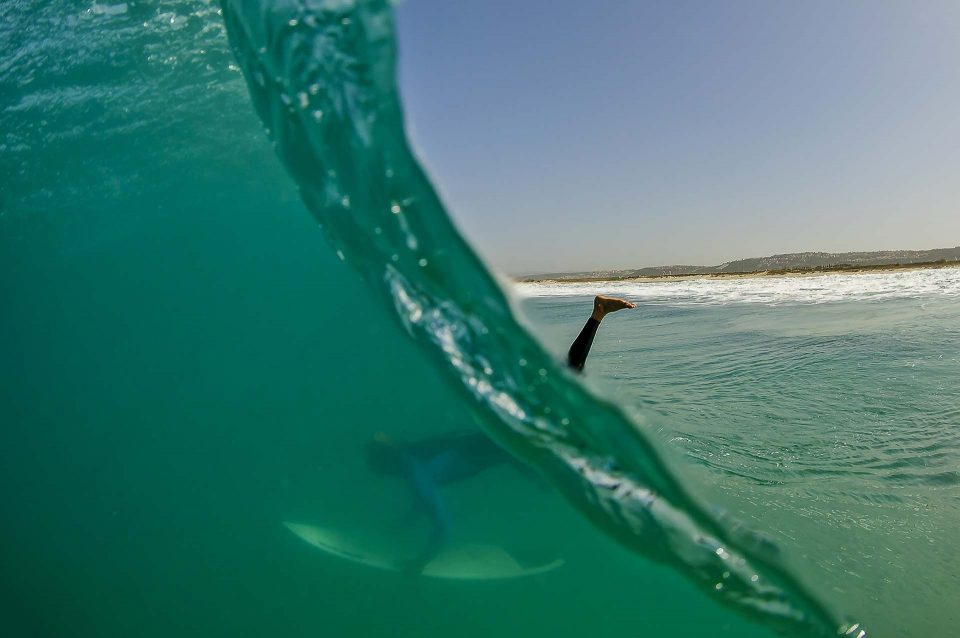
We use this lens for several objectives:
-
- Catching an ultra wide scene/frame while very close to the object.
-
- Surfing inside the barrel – catching the surfer together with the wave.
-
- Wave photography, “barrels” and angles from an inside-out wave
-
- Half and half photos
-
- Underwater photography
Here are examples of popular fisheye lens are on the market today:
| Canon EF 8-15mm f/4L | VIEW AT AMAZON | VIEW AT B&H |
| Nikon AF-S 8-15mm f/3.5-4.5E ED |  |
 |
| Tokina Fisheye 10-17mm f/3.5-4.5 AF |  |
 |
| Sigma 15mm f/2.8 EX DG |  |
 |
| Nikon AF DX 10.5mm f/2.8G ED Fisheye (crop sensor) |  |
 |
| Samyang 12mm f/2.8 ED AS NCS |  |
 |
| Rokinon 12mm F2.8 Ultra Wide Fisheye Lens for Sony E Mount |  |
 |
Wide Angle Zoom Lenses
Wide angle zoom Lenses are equipped with varying zooms, including ultra-wide angles.
We usually use these lenses when we want to catch an situation from up close, where the object will fill a large part of the frame and will still be in focus.
Wide angle lens are also good for wave photography and inside the barrel photography.
These lenses are good for obtaining an ultra-wide frame with no significant distortion (as with a fisheye lens).
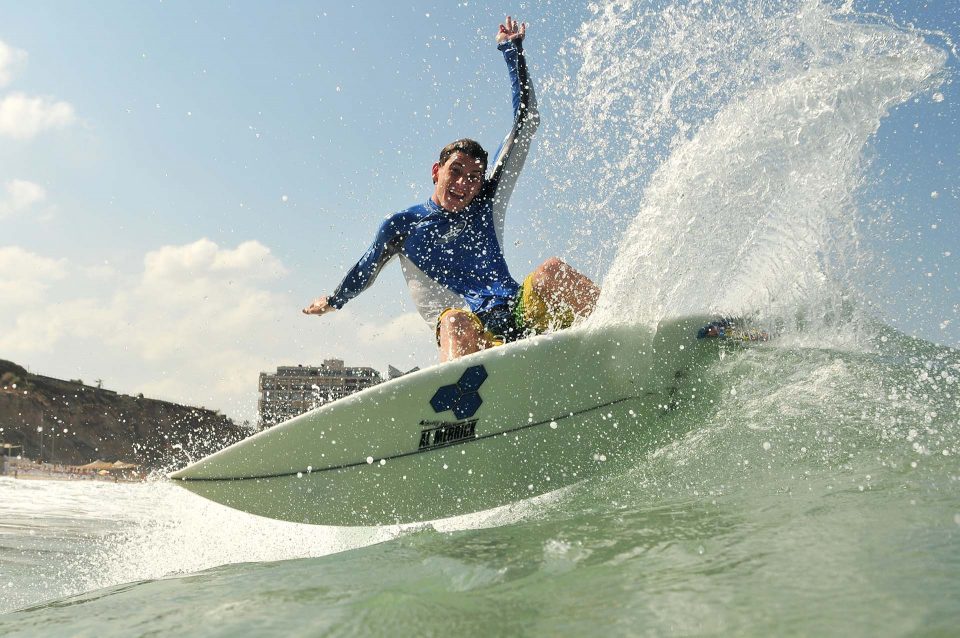
The following ranges of lens are popular in the market (Sony, Canon, Nikon, Tokina):
Sensor: Crop
-
- 10-18 mm
-
- 11-16 mm
-
- 11-20 mm
-
- 10-20 mm
-
- 10-24 mm
-
- 12-24 mm
Sensor: Full frame
-
- 12-24 mm
-
- 14-24 mm
-
- 15 -35 mm
-
- 16-35 mm
-
- 17 -35 mm
-
- 14 -28 mm
In this table you will find the most recommended WIDE ANGLE ZOOM lens for mirrorless camera. this lens are suitable for photographing surfing from the water:
| SONY E-MOUNT | |
| Sony – E 10-18mm F4 OSS Wide-Angle Zoom Lens |  |
| SONY FE 12-24mm F2.8 GM Full-frame Ultra-wide Zoom G Master Lens | VIEW AT AMAZON |
| FE 12-24mm F4 G Full-frame Ultra-wide Zoom G Lens | VIEW AT AMAZON |
| SONY FE 16-35mm F2.8 GM Full-frame Wide-angle Zoom G Master Lens | VIEW AT AMAZON |
| SONY FE PZ 16-35mm F4 G Full-frame Constant-Aperture Wide-angle Power Zoom G Lens | VIEW AT AMAZON |
| ZIESS & SONY Vario-Tessar T* FE 16–35 mm F4 ZA OSS Full-frameLens with Optical SteadyShot | VIEW AT AMAZON |
| TAMRON FOR SONY 17-28mm F/2.8 Di III RXD (full frame) | VIEW AT AMAZON |
| TAMRON for Sony 11-20MM F/2.8 DI III-A RXD E APS-C ( crop sensor) | VIEW AT AMAZON |
| SIGMA FOR SONY 14-24mm F2.8 DG DN | Art | VIEW AT AMAZON |
| FOR NIKON Z MOUNT | |
| NIKKOR Z 14-30mm f/4 S | VIEW AT AMAZON |
| NIKKOR Z 14-24mm f/2.8 S | VIEW AT AMAZON |
| FOR CANON R | |
| Canon RF 14-35mm F4L IS USM | VIEW AT AMAZON |
| Canon RF 15-35mm F2.8L IS USM | VIEW AT AMAZON |
| FOR FUJI | |
| FUJI XF8-16mmF2.8 R LM WR (CROP SENSOR) | VIEW AT AMAZON |
| FUJI XF10-24mmF4 R OIS WR (CROP SENSOR) | VIEW AT AMAZON |
| FUJI GF20-35mmF4 R WR (FULL FRAME) | VIEW AT AMAZON |
Zoom Lenses:
when the ocean doesn’t allow us to get close to the surfer because of high waves, stormy seas, current etc.
Or when we want to catch various situations without having to switch lenses, we take zoom lenses with us to the ocean.
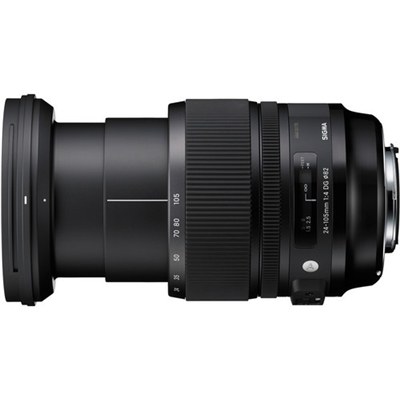
There are different types of ranges that are popular in surf photography:
Sensor: Crop
16-55 mm
17-50 mm
18-55 mm
16-70 mm
Sensor: Full frame
24-70 F2.8 mm
24-105 F4 mm
28-75 F2.8 mm
28-60 mm
Popular telephoto lens for water photography: 70-200 mm (f2.8, f4)
HERE ARE THE MOST POPULAR ZOOM LENS FOR USING IN THE WATER:
| SONY E-MOUNT | |
| Sony FE 24-70 mm F2.8 GM Full-frame G MASTER |  |
| SONY FE 24-70mm F2.8 GM II Full-frame (THE NEW VERSION) G MASTER | VIEW AT AMAZON |
| SONY ZIESS Vario-Tessar T* FE 24-70 mm F4 ZA OSS Full-frame | VIEW AT AMAZON |
| SONY E 16–55mm F2.8 G APS-C G LENS ( CROP SENSOR) | VIEW AT AMAZON |
| SONY ZIESS Vario-Tessar T* E 16-70 mm F4 ZA OSS APS-C (CROP SENSOR ) | VIEW AT AMAZON |
| SONY FE 28-70mm F3.5-5.6 OSS Full-frame | VIEW AT AMAZON |
| SONY FE 24–105 mm F4 G OSS Full-frame Standard Zoom G Lens with Optical SteadyShot | VIEW AT AMAZON |
| SONY FE 70-200 mm F2.8 GM OSS Full-frame | VIEW AT AMAZON |
| SONY 70–200 mm F2.8 G SSM II (NEW VERSION) full frame | SONY SITE |
| FOR NIKON Z MOUNT | |
| NIKKOR Z 24-70mm f/2.8 S | VIEW AT AMAZON |
| NIKKOR Z 24-70mm f/4 S | VIEW AT AMAZON |
| NIKKOR Z 70-200mm f/2.8 S | VIEW AT AMAZON |
| FOR CANON R | |
| Canon 24-70mm f/2.8 RF | VIEW AT AMAZON |
| Canon 24-105mm f/4 RF | VIEW AT AMAZON |
| CANON 70-200mm f/4 L IS RF | VIEW AT AMAZON |
| CANON 70-200mm f/2.8 L IS RF | VIEW AT AMAZON |
| FOR FUJI | |
| FUJI 16-55mm f/2.8 R LM WR | VIEW AT AMAZON |
| FUJI 18-55mm f/2.8- f/4 | VIEW AT AMAZON |
| FUJI 16-80mm f/4 R LM OIS WR | VIEW AT AMAZON |
| FUJI 50-140mm f/2.8 | VIEW AT AMAZON |
Prime Lenses
Lenses with a fixed zoom and preference for open aperture (f1.4, f1.8, f2, f2.8)
Using these lenses will provide us with a higher probability of sharp, quality photographs, with a shallower depth of field.
They are also easier to use in filming in the water (you won’t have to use a zoom gear system inside your housing).
popular PRIME lenses:
20 mm, 24 mm, 28 mm, 35 mm, 50 mm, 55 mm, 85 mm

In conclusion
The lens market fluctuates from year to year, and new lenses come into the market to replace older models that are being removed from store stock.
If you engage in photography and are interested in testing out a new lens before purchase, or you need this lens for a special project, I recommend you rent a lens for one day. You can test the lens quality, its weight and ease of use and then make your decision.
Please feel free to contact me with any questions you may have on equipment or on lens for surf photography and water sport
If you’d like advice on your selection of the appropriate lenses for surf photography, I am always available by email.
Uri Magnus : Surf and Water Sport Photographer
visit my article about choosing the right water housing for surf photography:

Lens for Surf Photography
So how we are choosing the right Lens for Surf Photography ?
What mm lens is best for surf photography and water sports?
As a surf and water sport photographer, I use a range of equipment that enables me to photograph from in the water and on the shore, thus widening my film angles and bringing the observer closer to the experience.
In this blog, I am delighted to share with you the information I have accumulated over the years on lenses currently in the market that are suitable for water sport photography and surf photography. All of this information is derived from personal experience, articles I have read and written and personal contact with other sea sport photographers.
We all know that the rate of technological development over recent years has increased greatly, as has the rate of production and development of new photography equipment and lenses. Prices may range from inexpensive to exorbitant, but are also determined by the optic quality of the lenses, which can range from standard to high quality optics.
Let me recommend a number of lenses currently on the market, with two separate objectives in mind:
-
- Photography from in the water
-
- Photography from the shore or on land
Lenses for filming on land:
What is the best focal length of lens for shooting from the beach?
When we film on land, whether at sports competitions, surfing sessions or any other event where we find ourselves distant from the surfer: We may be standing on the beach or on a cliff, boulder or boat at a distance that requires us to use telephoto lenses, which are mostly intended to bring very distant objects up close.
There are two types of telephoto lenses:
Zoom Telephoto lenses
The advantage in these lenses lies in their varying zoom, so we can catch different situations more quickly without having to change lenses.
Sometimes this is very important when we filming water sport events and action sport.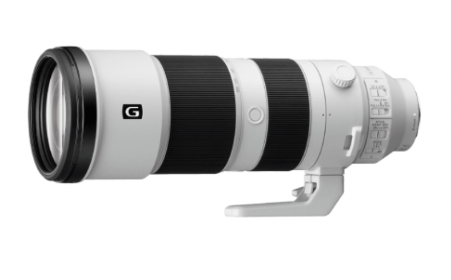
Recommended ranges of lens for surf photography from the shore:
The following zoom ranges are the most popular on the market:
100 – 400 mm I 150 -600 mm I 200 – 600 mm I 100 -500 mm I 80 -400 mm I 200 -500 mm I 18 -400 all around
Here you can find the exact lens model and links for amazon:
| SIGMA/TAMRON | |
| Sigma 150-600mm f/5-6.3 DG OS HSM Sports Lens (CANON, NIKON, SONY) |  |
| Tamron SP 150-600mm f/5-6.3 Di VC USD G2 (CANON, NIKON) |
VIEW AT AMAZON |
| Sigma 100-400mm F5-6.3 (SONY, CANON) |
VIEW AT AMAZON |
| Sigma 60-600mm f/4.5-6.3 DG OS HSM Sports Lens ( CANON, NIKON, SONY) | VIEW AT AMAZON |
| Tamron 18-400mm F/3.5-6.3 DI-II VC HLD (crop sensor all around lens for SONY, CANON) | VIEW AT AMAZON |
| CANON | |
| Canon RF 100-300mm F2.8L IS USM **NEW** | VIEW AT CANON |
| Canon EF 200-400mm f/4L IS USM Extender 1.4x Lens | VIEW AT AMAZON |
| Canon EF 100-400mm f/4.5-5.6L IS II USM Lens |
VIEW AT AMAZON |
| Canon RF 100-400mm f/5.6-8 IS USM Lens | VIEW AT AMAZON |
| Canon RF 100-500mm f/4.5-7.1 L IS USM | VIEW AT AMAZON |
| SONY | |
| Sony FE 100-400mm F4.5–5.6 GM OSS |
VIEW AT AMAZON |
| Sony FE 200-600mm F5.6-6.3 G OSS | VIEW AT AMAZON |
| NIKON | |
| NIKKOR Z 100-400mm f/4.5-5.6 VR S | VIEW AT AMAZON |
| Nikon AF-S FX NIKKOR 200-500mm f/5.6E ED | VIEW AT AMAZON |
| Nikon AF-S FX NIKKOR 80-400mm f.4.5-5.6G ED | VIEW AT AMAZON |
| PANASONIC | |
| Panasonic Leica DG Vario-Elmar 100-400mm f/4-6.3 | VIEW AT AMAZON |
| FUJIFILM | |
| FUJIFILM XF 100-400mm f/4.5-5.6 R LM OIS WR Lens | VIEW AT AMAZON |
| FUJIFILM XF150-600mmF5.6-8 R LM OIS WR | VIEW AT AMAZON |
| FUJIFILM XF70-300mmF4-5.6 R LM OIS WR | VIEW AT AMAZON |
Prime Telephoto lenses:
A prime telephoto lenses are the major guilty, recommended for low lighting on cloudy winter days or when we are distant from our object and still have no need to use varying zooms. use this lens to get the best bokeh images! these lenses are usually more expensive.

The recommended prime zoom range for surf photography:
so the most popular prime zoom lens in the market are: 300 mm I 400 mm I500 mm I600 mm I 800 mm f4/f2.8 and also the unique 200 F2 Prime lens if you have a situation that you need the Highest quality without the need for a long zoom lens.
Here you can find the best prime lens for mirrorless camera: (Canon, Sony, Nikon)
| CANON RF LENS | |
| Canon RF400mm F2.8 L IS USM |  |
| Canon RF600mm F4 L IS USM | VIEW AT AMAZON |
| Canon RF800mm F5.6 L is USM | VIEW AT AMAZON |
| Canon RF1200mm F8 L IS USM Lens | VIEW AT AMAZON |
| SONY E MOUNT | |
| Sony FE 400 mm F2.8 GM OSS Full-frame Super-telephoto | VIEW AT AMAZON |
| Sony FE 600 mm F4 GM OSS Full-frame Super-telephoto | VIEW AT AMAZON |
| NIKON Z MOUNT | |
| NIKKOR Z 400mm f/2.8 TC VR S | VIEW AT AMAZON |
| NIKKOR Z 400mm f/4.5 VR S | VIEW AT AMAZON |
| NIKKOR 600mm f/4. Built-in 1.4x teleconverter **NEW** | VIEW AT AMAZON |
| NIKKOR Z 800mm f/6.3 VR S | VIEW AT AMAZON |
TELECONVERTER:
With these prime telephoto lenses, we can also attach a teleconverter, thus increasing your zoom by x 1.4 or x 2.
Here you can find links for Teleconverter to extend zoom on prime lens (Sony, Canon, Nikon, Fuji):
| Sony FE 1.4x Teleconverter MIRRORLESS |  |
| Sony FE 2.0x Teleconverter MIRRORLESS | VIEW AT AMAZON |
| Canon EXT. RF1.4X (RF LENSES – MIRRORLESS) | VIEW AT AMAZON |
| Canon EF 1.4X III ( EF LENSES – DSLR ) | VIEW AT AMAZON |
| Canon EXT. RF2X (RF LENSES – MIRRORLESS) | VIEW AT AMAZON |
| Nikon AF-S FX TC-14E III (1.4x) Teleconverter (DSLR) | VIEW AT AMAZON |
| NIKON AF-S Teleconverter TC-20E III (2.0X) FOR DSLR | VIEW AT AMAZON |
| NIKON Z TELECONVERTER TC-1.4x FOR MIRRORLESS | NIKON SITE |
| NIKON Z TELECONVERTER TC-2.0x FOR MIRRORLESS | NIKON SITE |
| Fujinon XF1.4X TC WR | VIEW AT AMAZON |
| Fujinon XF2X TC WR | VIEW AT AMAZON |
Lenses for surf photography when we filming in the water
So how we are photographing surfers from the water?
When we film from in the water, we usually try to get as close as we can to the surfer
and therefore, we usually have to use one of 3 types of lenses:
Fisheye lens
This lens creates an intended distortion of the picture to obtain a very wide camera angle.
We use this lens for several objectives:
-
- Catching an ultra wide scene/frame while very close to the object.
-
- Surfing inside the barrel – catching the surfer together with the wave.
-
- Wave photography, “barrels” and angles from an inside-out wave
-
- Half and half photos
-
- Underwater photography
Here are examples of popular fisheye lens are on the market today:
| Canon EF 8-15mm f/4L | VIEW AT AMAZON | VIEW AT B&H |
| Nikon AF-S 8-15mm f/3.5-4.5E ED |  |
 |
| Tokina Fisheye 10-17mm f/3.5-4.5 AF |  |
 |
| Sigma 15mm f/2.8 EX DG |  |
 |
| Nikon AF DX 10.5mm f/2.8G ED Fisheye (crop sensor) |  |
 |
| Samyang 12mm f/2.8 ED AS NCS |  |
 |
| Rokinon 12mm F2.8 Ultra Wide Fisheye Lens for Sony E Mount |  |
 |
Wide Angle Zoom Lenses
Wide angle zoom Lenses are equipped with varying zooms, including ultra-wide angles.
We usually use these lenses when we want to catch an situation from up close, where the object will fill a large part of the frame and will still be in focus.
Wide angle lens are also good for wave photography and inside the barrel photography.
These lenses are good for obtaining an ultra-wide frame with no significant distortion (as with a fisheye lens).
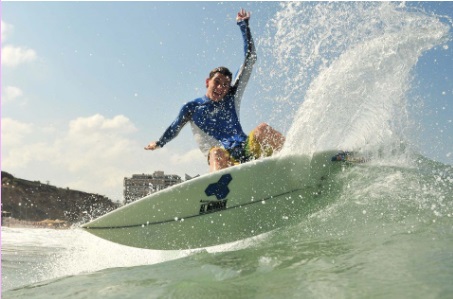
The following ranges of lens are popular in the market (Sony, Canon, Nikon, Tokina):
Sensor: Crop
-
- 10-18 mm
-
- 11-16 mm
-
- 11-20 mm
-
- 10-20 mm
-
- 10-24 mm
-
- 12-24 mm
Sensor: Full frame
-
- 12-24 mm
-
- 14-24 mm
-
- 15 -35 mm
-
- 16-35 mm
-
- 17 -35 mm
-
- 14 -28 mm
In this table you will find the most recommended WIDE ANGLE ZOOM lens for mirrorless camera. this lens are suitable for photographing surfing from the water:
| SONY E-MOUNT | |
| Sony – E 10-18mm F4 OSS Wide-Angle Zoom Lens |  |
| SONY FE 12-24mm F2.8 GM Full-frame Ultra-wide Zoom G Master Lens | VIEW AT AMAZON |
| FE 12-24mm F4 G Full-frame Ultra-wide Zoom G Lens | VIEW AT AMAZON |
| SONY FE 16-35mm F2.8 GM Full-frame Wide-angle Zoom G Master Lens | VIEW AT AMAZON |
| SONY FE PZ 16-35mm F4 G Full-frame Constant-Aperture Wide-angle Power Zoom G Lens | VIEW AT AMAZON |
| ZIESS & SONY Vario-Tessar T* FE 16–35 mm F4 ZA OSS Full-frameLens with Optical SteadyShot | VIEW AT AMAZON |
| TAMRON FOR SONY 17-28mm F/2.8 Di III RXD (full frame) | VIEW AT AMAZON |
| TAMRON for Sony 11-20MM F/2.8 DI III-A RXD E APS-C ( crop sensor) | VIEW AT AMAZON |
| SIGMA FOR SONY 14-24mm F2.8 DG DN | Art | VIEW AT AMAZON |
| FOR NIKON Z MOUNT | |
| NIKKOR Z 14-30mm f/4 S | VIEW AT AMAZON |
| NIKKOR Z 14-24mm f/2.8 S | VIEW AT AMAZON |
| FOR CANON R | |
| Canon RF 14-35mm F4L IS USM | VIEW AT AMAZON |
| Canon RF 15-35mm F2.8L IS USM | VIEW AT AMAZON |
| FOR FUJI | |
| FUJI XF8-16mmF2.8 R LM WR (CROP SENSOR) | VIEW AT AMAZON |
| FUJI XF10-24mmF4 R OIS WR (CROP SENSOR) | VIEW AT AMAZON |
| FUJI GF20-35mmF4 R WR (FULL FRAME) | VIEW AT AMAZON |
Zoom Lenses:
when the ocean doesn’t allow us to get close to the surfer because of high waves, stormy seas, current etc.
Or when we want to catch various situations without having to switch lenses, we take zoom lenses with us to the ocean.

zoom lens example
There are different types of ranges that are popular in surf photography:
Sensor: Crop
16-55 mm
17-50 mm
18-55 mm
16-70 mm
Sensor: Full frame
24-70 F2.8 mm
24-105 F4 mm
28-75 F2.8 mm
28-60 mm
Popular telephoto lens for water photography: 70-200 mm (f2.8, f4)
HERE ARE THE MOST POPULAR ZOOM LENS FOR USING IN THE WATER:
| SONY E-MOUNT | |
| Sony FE 24-70 mm F2.8 GM Full-frame G MASTER |  |
| SONY FE 24-70mm F2.8 GM II Full-frame (THE NEW VERSION) G MASTER | VIEW AT AMAZON |
| SONY ZIESS Vario-Tessar T* FE 24-70 mm F4 ZA OSS Full-frame | VIEW AT AMAZON |
| SONY E 16–55mm F2.8 G APS-C G LENS ( CROP SENSOR) | VIEW AT AMAZON |
| SONY ZIESS Vario-Tessar T* E 16-70 mm F4 ZA OSS APS-C (CROP SENSOR ) | VIEW AT AMAZON |
| SONY FE 28-70mm F3.5-5.6 OSS Full-frame | VIEW AT AMAZON |
| SONY FE 24–105 mm F4 G OSS Full-frame Standard Zoom G Lens with Optical SteadyShot | VIEW AT AMAZON |
| SONY FE 70-200 mm F2.8 GM OSS Full-frame | VIEW AT AMAZON |
| SONY 70–200 mm F2.8 G SSM II (NEW VERSION) full frame | SONY SITE |
| FOR NIKON Z MOUNT | |
| NIKKOR Z 24-70mm f/2.8 S | VIEW AT AMAZON |
| NIKKOR Z 24-70mm f/4 S | VIEW AT AMAZON |
| NIKKOR Z 70-200mm f/2.8 S | VIEW AT AMAZON |
| FOR CANON R | |
| Canon 24-70mm f/2.8 RF | VIEW AT AMAZON |
| Canon 24-105mm f/4 RF | VIEW AT AMAZON |
| CANON 70-200mm f/4 L IS RF | VIEW AT AMAZON |
| CANON 70-200mm f/2.8 L IS RF | VIEW AT AMAZON |
| FOR FUJI | |
| FUJI 16-55mm f/2.8 R LM WR | VIEW AT AMAZON |
| FUJI 18-55mm f/2.8- f/4 | VIEW AT AMAZON |
| FUJI 16-80mm f/4 R LM OIS WR | VIEW AT AMAZON |
| FUJI 50-140mm f/2.8 | VIEW AT AMAZON |
Prime Lenses
Lenses with a fixed zoom and preference for open aperture (f1.4, f1.8, f2, f2.8)
Using these lenses will provide us with a higher probability of sharp, quality photographs, with a shallower depth of field.
They are also easier to use in filming in the water (you won’t have to use a zoom gear system inside your housing).
popular PRIME lenses:
20 mm, 24 mm, 28 mm, 35 mm, 50 mm, 55 mm, 85 mm
In conclusion
The lens market fluctuates from year to year, and new lenses come into the market to replace older models that are being removed from store stock.
If you engage in photography and are interested in testing out a new lens before purchase, or you need this lens for a special project, I recommend you rent a lens for one day. You can test the lens quality, its weight and ease of use and then make your decision.
Please feel free to contact me with any questions you may have on equipment or on lens for surf photography and water sport
If you’d like advice on your selection of the appropriate lenses for surf photography, I am always available by email.
Uri Magnus : Surf and Water Sport Photographer
visit my article about choosing the right water housing for surf photography:
